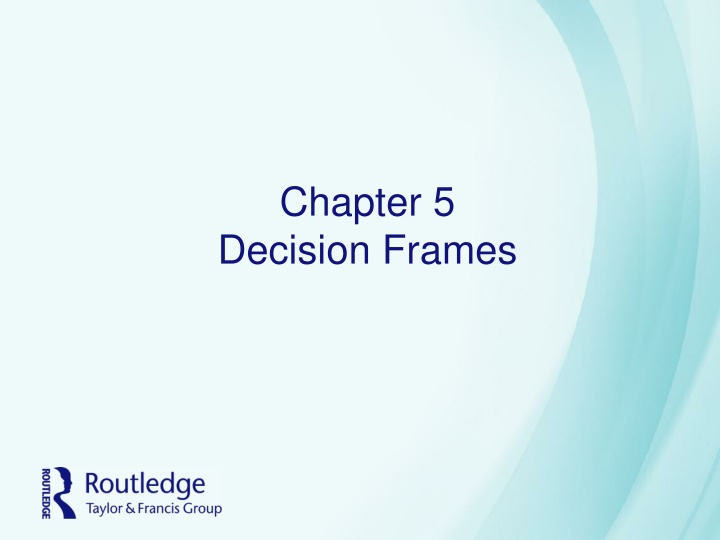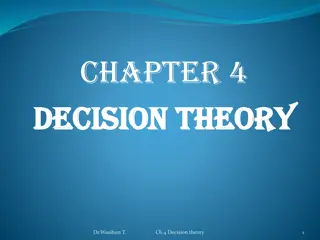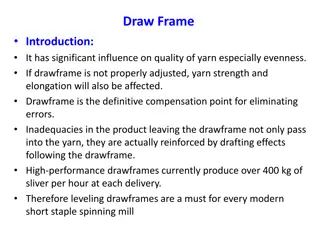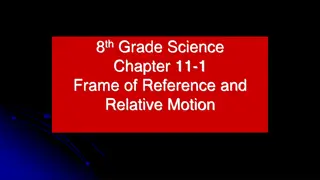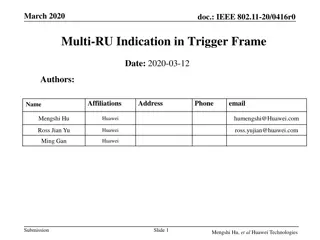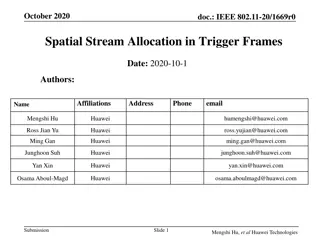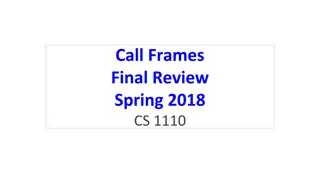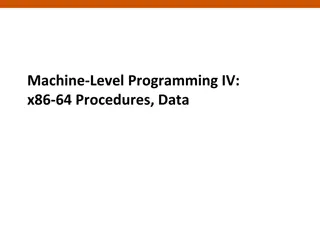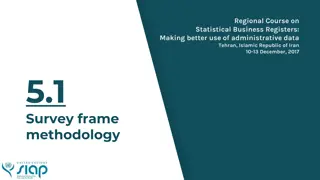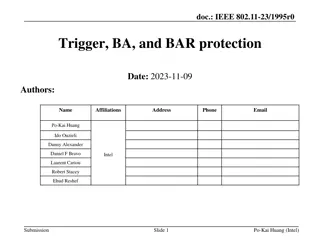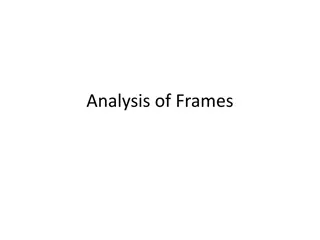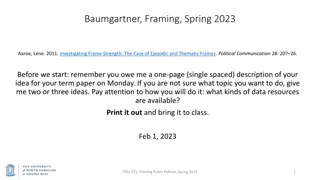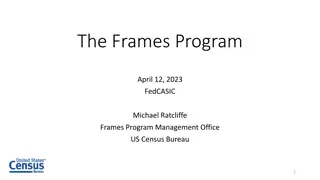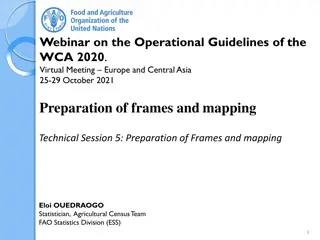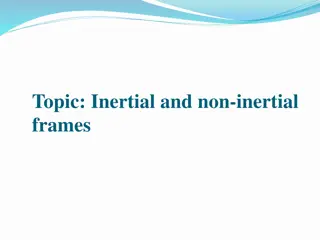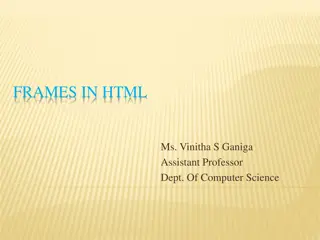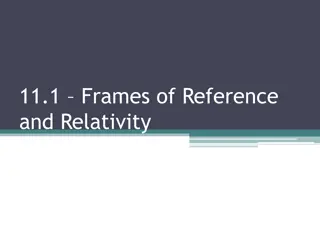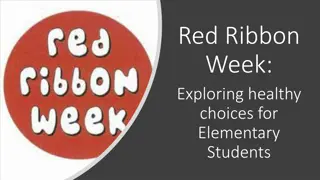Decision Frames and Impact on Choices
The way questions are framed significantly influences our decision-making processes. Explore scenarios where framing impacts choices, featuring examples from studies by prominent psychologists Tversky and Kahneman. Understand concepts like extremeness aversion and left-digit bias, reflecting on how individuals make decisions based on subtle framing distinctions.
Download Presentation

Please find below an Image/Link to download the presentation.
The content on the website is provided AS IS for your information and personal use only. It may not be sold, licensed, or shared on other websites without obtaining consent from the author.If you encounter any issues during the download, it is possible that the publisher has removed the file from their server.
You are allowed to download the files provided on this website for personal or commercial use, subject to the condition that they are used lawfully. All files are the property of their respective owners.
The content on the website is provided AS IS for your information and personal use only. It may not be sold, licensed, or shared on other websites without obtaining consent from the author.
E N D
Presentation Transcript
Chapter 5 Decision Frames
Framing Impacts The way in which questions are framed have a strong impact on our decision. Imagine that the United States is preparing for the outbreak of an unusual disease, which is expected to kill 600 people. Two alternative programs to combat the disease have been proposed. Assume the exact scientific estimates of the consequences of the programs are as follows: If program A is adopted 200 people will be saved. people will be saved, and a 2/3 probability that no saved. If program B is adopted there is a 1/3 probability that 600 one will be Which program do you choose? 2 Tversky, A., & Kahneman, D. (1981). The framing of decisions and the psychology of choice. Science, 211, 453 458
Outbreak Example Continued The same disease is back. Only this time the two programs now have the following payoffs: If program C is adopted 400 people will die. nobody will die, and a 2/3 probability that 600 people will die. If program D is adopted there is a 1/3 probability that Which program do you choose? Note program A and C are the same except for frame. (B & D too) Given positive frame: (72% for A, 28% for B) Given negative frame: (22% for C, 78% for D) 3
A numbers example You have 10 seconds to compute the result of the following multiplication 2 3 4 5 6 7 8 Average = 512 8 7 6 5 4 3 2 Average = 2,250 Answer is 40,320 4 Amos Tversky and Daniel Kahneman, 1974, Judgment under Uncertainty: Heuristics and Biases, Science, 185: 1124-31
Extremeness Aversion When two options with similar attributes are presented (like cameras) ! !! $250 $300 people pick the less expensive option 5
Extremeness Aversion When a more expensive third option is available ! !! !!! $250 $300 $400 people tend to go for the middle of the road 6
Left Digit Bias Which difference is greater? $4.00 and $2.99 or $4.01 and $3.00 Obviously the same $1.01 difference But people behave as if the first example has a greater difference! 7 Tatiana Sokolova, Satheesh Seenivasan, and Manoj Thomas, The Left-Digit Bias: When and Why Are Consumers Penny Wise and Pound Foolish? Journal of Marketing Research 57(4) (2020): 771 788.
In Panel A, pick the retirement plan option for your pension plan investment. Panel A Option A Option B Option C Good Market Conditions (50% chance) $900 $1,100 $1,260 Bad Market Conditions (50% chance) $900 $800 $700 Panel B Program 1 Program 2 Program 3 Good Market Conditions (50% chance) $1,100 $1,260 $1,380 Bad Market Conditions (50% chance) $800 $700 $600 Then, in Panel B, pick the retirement plan program for your pension plan investment.
Who picked what? Notice that Option C appears to be a high risk investment in Panel A Program 2 is the same as Option C, but it appears to be a middle risk investment In a study People seemed to prefer Option B over Option C when choosing from Panel A. People seemed to prefer Option C over Option B when they were shown in Panel B In short People don t really know what level of risk they want to take People measure risk in relative, not absolute, terms 9
Framing: Risk and Expected Return Firms with poor growth prospects and/or high leverage are considered higher- risk firms. Finnish advisors asked about return of these higher-risk firms in two different frames: What return do you expect? Do you demand a risk premium for these stocks? 10 Markku Kaustia, Heidi Laukkanen, and Vesa Puttonen, Should Good Stocks Have High Prices or High Returns? Financial Analysts Journal 65(3), 2009, 55-62. Total n=742
High Expected Return and Low Risk? Each year, Fortune surveys executives and analysts on the reputations of companies. For the 2007 survey, investors were asked to rate these firms expected return and risk on a scale of 1 to 10. Meir Statman, Kenneth L. Fisher, Deniz Anginer, 2008, Affect in a Behavorial Asset-Pricing Model, Financial Analysts Journal, 64(2), 20-29.
Does Everyone Behave the Same? The Cognitive Reflection Test (CRT) 1) If it takes 5 machines 5 minutes to make 5 widgets, how long would it take 100 machines to make 100 widgets? 2) In a lake, there is a patch of lily pads. Everyday, the patch doubles in size. If it takes 48 days for the patch to cover the entire lake, how long would it take for the patch to cover half the lake? 3) A bat and ball together cost $1.10. The bat costs $1.00 more than the ball. How much does the ball cost? 12 Shane Frederick, 2005, Cognitive Reflection and Decision Making, Journal of Economic Perspectives, 19(4), Fall.
Intuitive versus Analytical Thinkers Intuitive Thinkers Quicker decisions, but with less deliberation Analytical Thinkers Slower and reflective decision makers CRT is designed so that correct answers are indicative of Analytical Thinkers Analytical Intuitive 1) 5 minutes 100 minutes 2) 47 days 24 days 3) 5 10
How Analytical is Your Advisor? 3 correct answers is a strong indication of analytical thinking 0 correct answers is a strong indication of intuitive thinking MIT students = 2.18 Mean CRT: People at Boston fireworks show = 1.53 Online study = 1.10 Sample of 108 financial planners, Ave = 1.76 CRT Score 0 1 2 3 Distribution 21 22 27 38
Intuitive vs. Deliberative Self Cognitive / Deliberative Intuitive / Affective Relatively slow Relatively fast Demanding of cognitive capacity Undemanding of cognitive capacity Controlled Automatic Analytic Holistic Rule-based Associative Sources: Stanovich and West (2002)
Consequences Affective processing can result in... Paying more to save a panda bear Taking less risk in a variety of domains (from smoking to choosing travel destinations) Saving more for retirement Sources: Hsee and Rottenstreich (2004), Hammond et al. (2004, 2006)v 16
Analytical-Intuitive Thinking and Risky Decisions Prefer to receive (A) $100 for certain or (B) a 50% chance to receive $300 and a 50% to receive nothing? Prefer to pay (A) $100 for certain or (B) a 50% chance to pay $300 and a 50% to pay nothing? Note that expected values are different! 17 John Nofsinger and Abhishek Varma, 2007, How Analytical is Your Financial Advisor? Financial Services Review, 16(4), 245-260.
Inter-temporal Choice Which of these payoffs would you pick? Receive $3,400 this quarter or $3,800 next quarter? Includes an 11.76% rate of return for one quarter This is a 56% compound annual rate 80 68.4 70 Percent Frequency (%) 60 53.5 46.5 50 40 31.6 30 20 10 0 $3,400 this quarter $3,800 next quarter p-value = 0.047 Intuitive Analytical
Two More Decisions Low CRT (Intuitive) High CRT (Analytical) Patience Maximum amount willing to pay to receive book sooner from Amazon.com $10.03 $2.63 Risk Aversion $846.03 $218.66 Amount needed to win in order to offset 50% chance of losing $100
Default People Into Savings Plans With automatic enrollment, participants are enrolled at a default saving rate and in a default fund No employee action taken = employee in plan Puts inertia to work for the employee 20
Automatic Enrollment Fortune 500 company Plan: Contribute up to 15%, first 6% receives a 50% match Implemented an automatic enrollment for new employees: Contribution rate of 3%, default is Money Market Fund Reframing the decision: Opt-in versus Opt-out Results: Participation Rate 85.9% Contribution Rate 4.4% Allocation to MMF 90.8% New Employees 37.4% 7.3% 17.0% Prior New Employees Brigitte Madrian and Dennis Shea, The Power of Suggestion: Inertia in 401(k) Participation and Savings Behavior, Quarterly Journal of Economics 116, 2001.
Automatic Enrollment Problems: Most just take the 3% rate and the MMF even those who would have contributed more and taken more market risk Over time, they are still anchored to the low contribution rate and the conservative investment 22
Alphabeticity Bias Employees can also get overwhelmed when they have hundreds of investment choices in their pension plan People tend to allocate more money to choices listed earlier in the menu Cease their search after the first acceptable option is found, called satisficing More likely that the funds appearing toward the beginning of the list will be selected If the Royce Pennsylvania Mutual fund changed its name to American Royce Pennsylvania Mutual and moved up 10- positions in the menu, investment in the fund would increase roughly by 20% 23 Thomas W. Doellman, Jennifer Itzkowitz, Jesse Itzkowitz, and Sabuhi H. Sardarli, Alphabeticity Bias in 401(k) Investing, The Financial Review 54 (2019): 643-677.
Social Security Claiming When do you start taking SS payments? The earlier you start, the lower the payments Historically, SS framed the decision as breakeven analysis Age 64 versus 65 Get less money if 64, but get 12 more payments. How long do you need to live to make taking SS at 65 a better deal? Expressed as income 24
Behavioral aspects Reference point: 64 vs 65, why not 67 vs 68? Negative frame: loss frame of getting less money Income versus consumption Varying the frames in an experiment with 1,500 people shows that: The old breakeven analysis causes people to select a claiming age that is 16 months early Later SS claiming associated with: (1) the reference age in the example was older (2) differences in money was expressed as gains (3) terms are consumption based 25 Jeffrey R. Brown, Arie Kapteyn, and Olivia S. Mitchell, Framing and Claiming: How Information-Framing Affects Social Security Claiming Behavior, Journal of Risk and Insurance (2016), 83(1): 139-162.
Summary People seem to be fooled by decision frames. One such frame is the positive/negative context. Frames impact investors too. The design of many 401(k) plans use decision frames like opt-in and many investment menu choices that do not foster plan participation. Better designs can help people make better choices. Thinking mode may also be a factor. Intuitive decision makers behave in a manner consistent with prospect theory. However, those who use a more analytical process often do not. Thus, frames may influence people differently. 26
